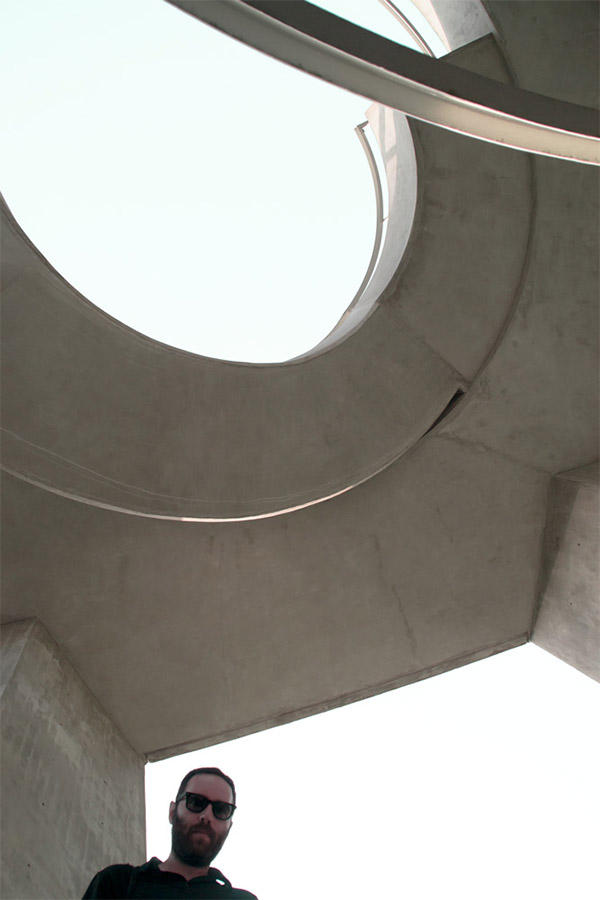Foto di I. Friman CC BY-SA 3.0
DOVE
Antiche carceri del castello
(ingresso dall’atrio principale)
ORARI DI APERTURA
16 – 24 giugno
da giovedì a domenica ore 15 – 19
ingresso solo con accompagnatore
per gruppi di 5 persone alla volta
INAUGURAZIONE
Sabato 16 giugno ore 11
SALVATORE MIELE
DSM – Digital Surveillance Model
installazione sonora (2018)
Produzione: Tempo Reale, Spazioersetti
Produzione: Tempo Reale, Spazioersetti
L’installazione DSM – Digital Surveillance Model ispira il suo concept al Panopticon progettato da Jeremy Bentham nel 1791 e alla metafora di potere invisibile indagato negli anni dopo la sua creazione. L’idea di un occhio digitale atto a sorvegliare, in DSM si trasforma in orecchio demandato a percepire la sorveglianza, dove il fruitore diviene elemento esterno e allo stesso tempo individuo coinvolto. I suoni che vanno a comporre le articolazioni di DSM sono stati registrati sul campo all’interno del Complesso Circondariale di Sollicciano a Firenze, da Valeria Muledda e altri field-recordists nell’ambito del progetto europeo “Le paysage sonore dans lequel nous vivons” condotto da Tempo Reale e altri partner internazionali.
DSM vuole restituire lo spazio della reclusione attraverso il paradosso della fruizione libera da costrizioni, prediligendo l’orecchio come ricettore esclusivo di un modello, quello del Panopticon, scopico per eccellenza.

Salvatore Miele è un musicista di base a Bologna, città dove attualmente vive e lavora, e nella quale ha studiato Musica Elettronica ed Audiovisione. Il suoi lavori sono caratterizzati dall’organizzazione di suoni in strutture saturate, stratificando differenti elementi timbrici e combinando pulsazioni ritmiche e dissonanze con sequenze sintetiche dall’impatto più melodico.
Come ricercatore indipendente, è fondatore dell’Associazione Fare Ricerca, studia il paesaggio sonoro e lo spazio urbano, pratica la registrazione sul campo, indaga la sua eventuale restituzione in ambito artistico e scientifico. Collabora regolarmente con Tempo Reale, il centro di ricerca musicale fondato da Luciano Berio a Firenze.
WHERE
old prisons of the castle
(entrance from the main hall)
OPEN
June 16th – 24th
From Thursday to Sunday 3 – 7pm
entrance only with the guide
max 5 persons at a time
INAUGURATION
Saturday June 16th at 11am
SALVATORE MIELE
DSM – Digital Surveillance Model
Multichannel sound installation (2018)
Production: Tempo Reale, Spazioersetti
Production: Tempo Reale, Spazioersetti
DSM – Digital Surveillance Model is an installation inspired by the concept of the Panopticon planned by Jeremy Bentham in 1791 and to the metaphor of invisible power investigated in the years after its creation. In DSM the concept of the digital eye suited to guard is transformed into an ear submitted to perceive the surveillance. In DSM the user becomes an external element and, at the same time, an involved individual.
The sounds that compose the articulations of DSM have been recorded on the field inside the Complesso Circondariale of Sollicciano, Florence, by Valeria Muledda and other field-recordists within the European project “Le paysage sonore dans lequel nous vivons” led by Tempo Reale and other international partner.
DSM wants to give back the space of the imprisonment through the paradox of the fruition free from constraints. DSM prefers to consider the ear as an exclusive receptor of the visual model par excellence: the Panopticon.
Salvatore Miele is a musician based in Bologna, the city where he currently lives and works, and in which has studied Electronic Music and Audiovisual. His works are characterized by the organization of sounds in saturated structures, stratifying different tonal elements and combining rhythmic pulsations and dissonances with synthetic sequences with a more melodic impact.
As an independent researcher, he is a founder member of Associazione Fare Ricerca, he studies the soundscapes, the urban space and he practises field recording, investigating its possible return in the artistic and scientific area. He regularly collaborates with Tempo Reale, the musical research center founded by Luciano Berio in Florence.
